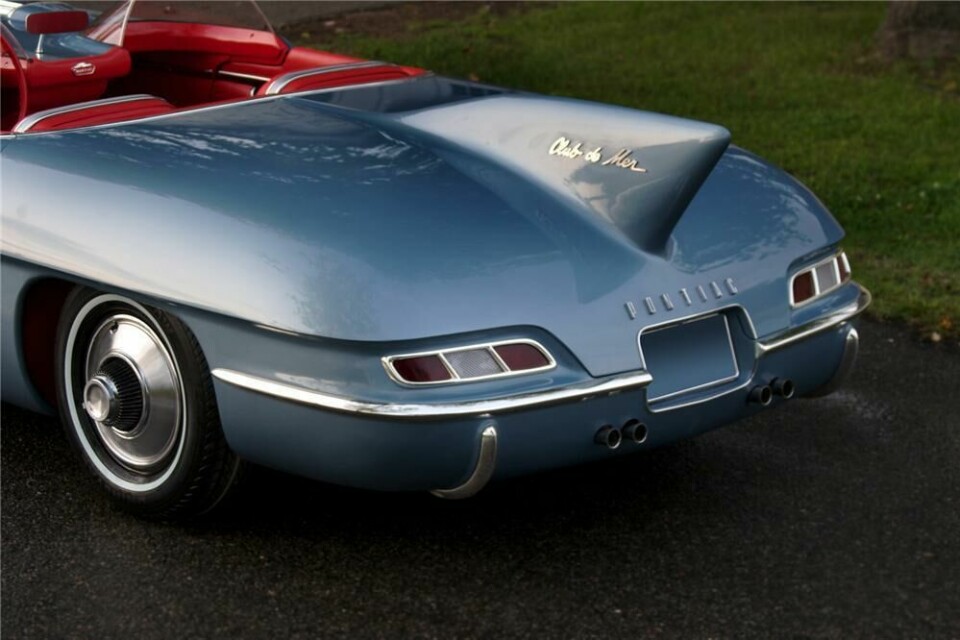
CCotW: Pontiac Club de Mer (1956)
Karl Smith digs back into the history of the astonishing Pontiac Club de Mer, inspired partly by dry-lake speedsters of the time
GM’s General Motoramas of the 1950s were the premier car event of their day, a one-manufacturer show that displayed production offerings from all divisions of the giant car maker, but also host of dream cars that looked forward to the sleek, rocket-propelled personal spaceships that supposedly awaited just over the horizon.
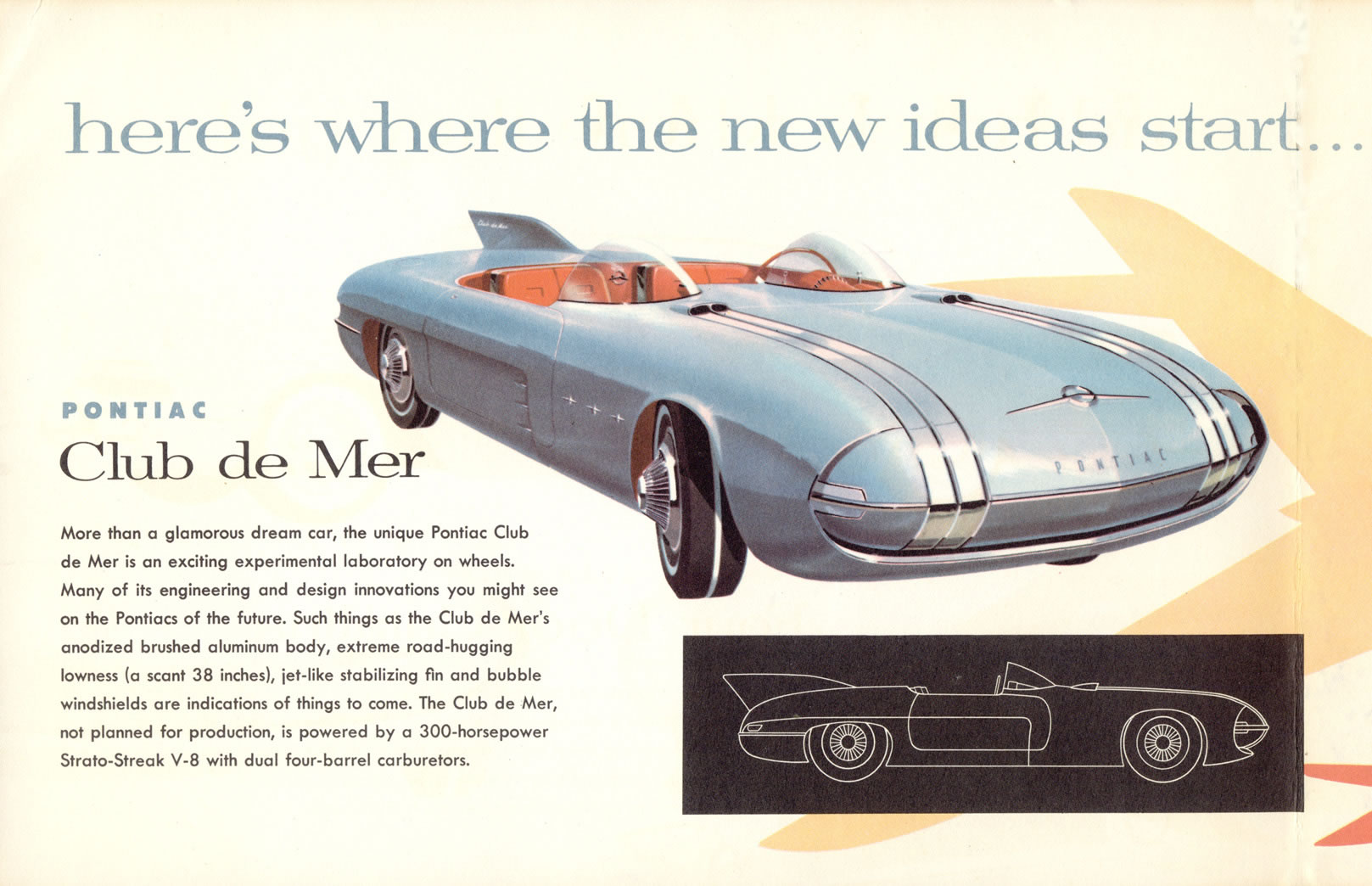
The Club de Mer page from the 1956 Motorama program
The 1956 edition of the show was perhaps the best of the all the Motoramas, having gone from strength to strength, building an audience that grew in both size and excitement year after year.
A number of concept classics were displayed in ‘56, including the magnificent Buick Centurion, designed by Chuck Jordan under the leadership of Harley Earl.
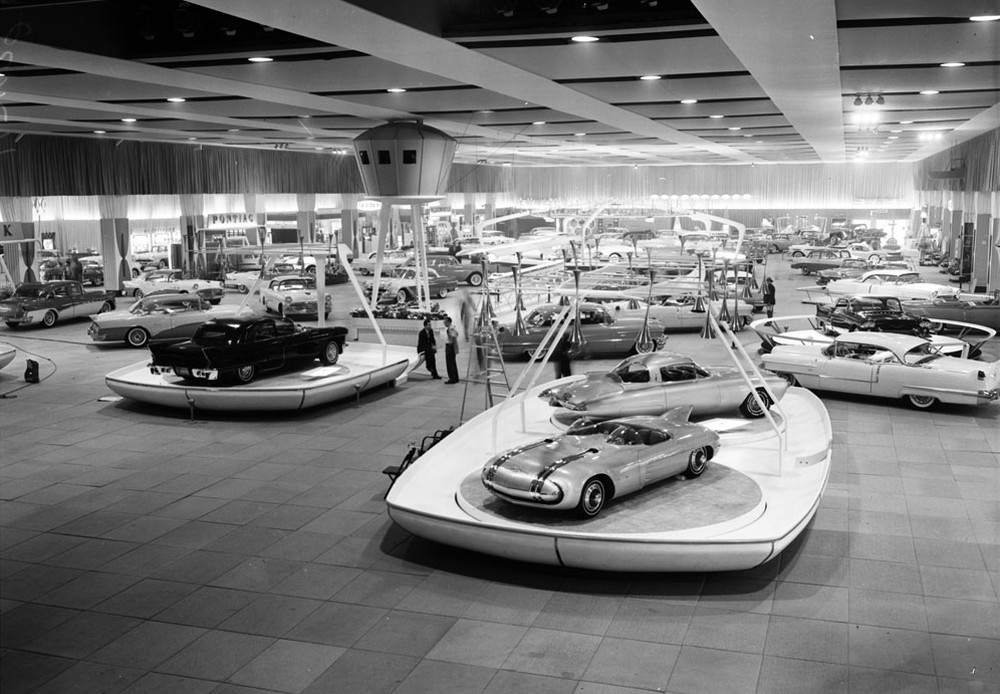
Club de Mer (front) at the 1956 Motorama. The Oldsmobile Golden Rocket is immediately beyond
Off to the side were two concepts from sister divisions Buick, Oldsmobile and Pontiac. The Oldsmobile was the Golden Rocket – a glassy coupé that played up Oldsmobile’s Rocket 88 theme – and a sliver-blue open top car, the Pontiac Club de Mer.
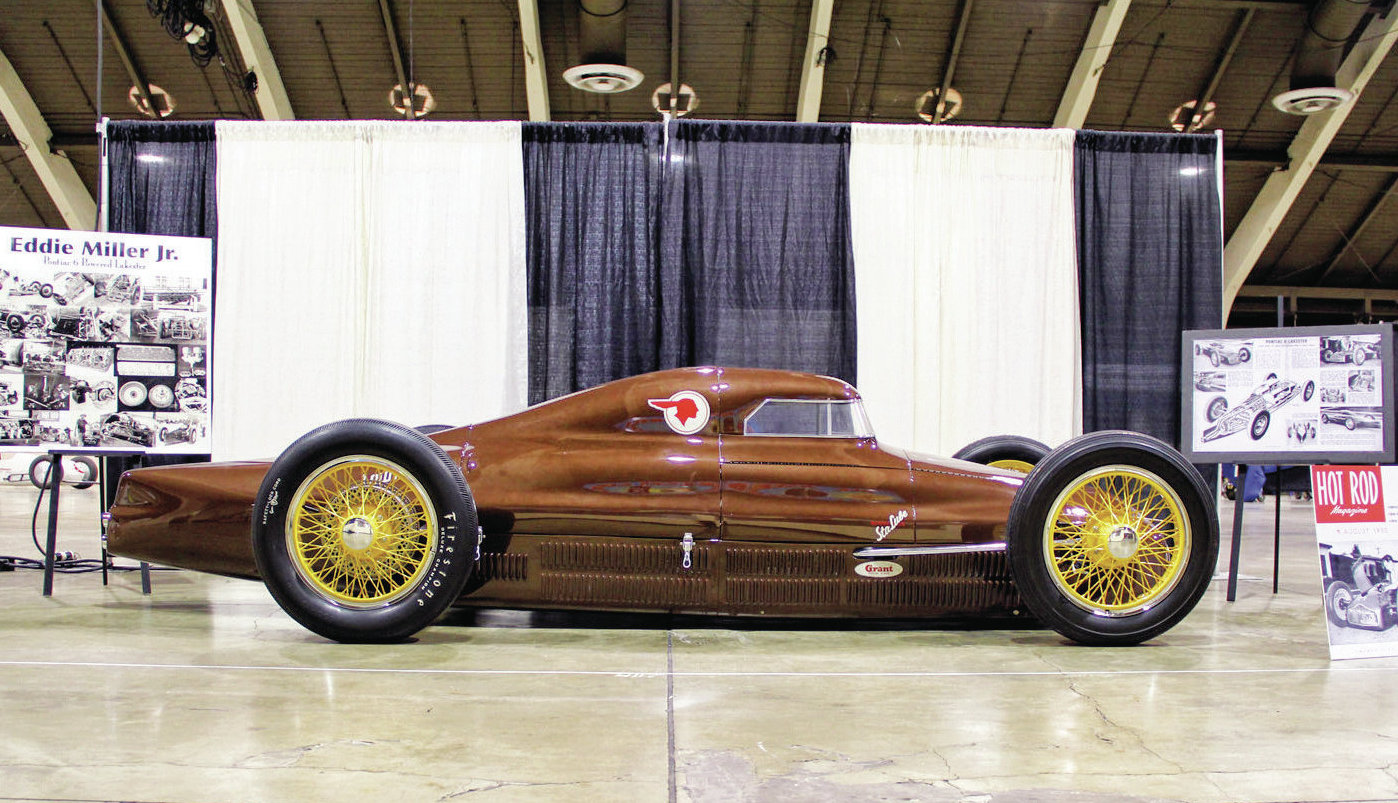
Eddie Miller’s Pontiac-powered lakester. Although it wasn’t sponsored by GM, it had an enormous influence on the Pontiac brand and its image. (photo: Hot Rod magazine)
The Club-de-Mer continued some of the design themes first shown in the design of the 1954 Bonneville Special- mainly an interest in the streamlined forms of the dry-lake racers, such as Eddie Miller’s record setting lakester, which held several land speed records for its class-despite having a frumpy Pontiac flathead under the hood.
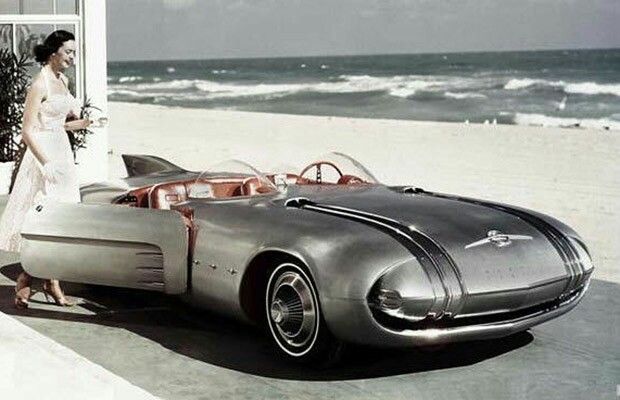
The Club de Mer in Miami – the perfect setting for its resort club image
But the design of the Club-de-Mer projected a more casual, resort-type cruising and performance vibe: the simple, streamlined form, the open roadster format and of course, the name, which evoked seaside club ambience and sophistication. It was a car that suggested performance, but was really meant for cruising – to see and be seen in.
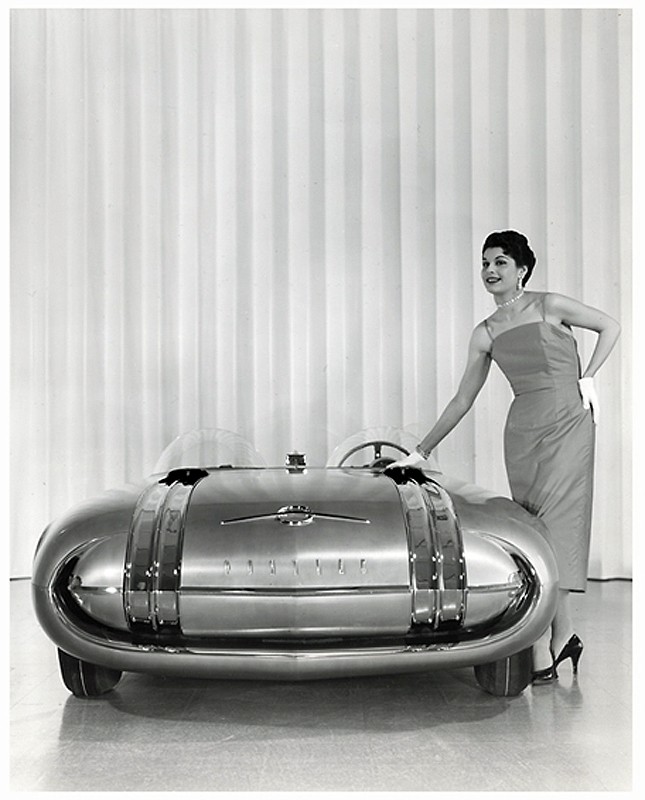
The Club de Mer’s nose. Note the model struggling to touch the low hood
The Club-de-Mer was not a large car by 1950s standards, but it gave that impression, owing to its long and low proportion and stance. The car stood only 38.4 inches (970mm) high and was 180 inches (4572mm) long on a 104 inch (2642mm) wheelbase.
Pontiac historian Don Keefe noted by way of comparison, that the Club-de-Mer was more than 24 inches (600mm) longer, and yet 10 inches (254mm) lower, than a current Mazda MX-5.
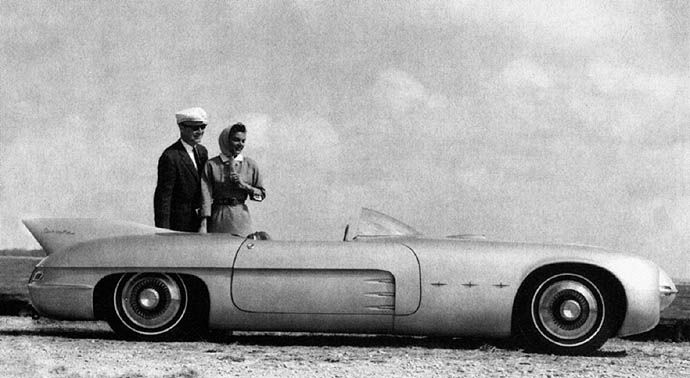
Seen from the side, the Club-de-Mer seemed almost cartoonishly long
Viewed from the side, the car seemed almost cartoonishly long, (even the wheelbase), due to its short height. It also sat low on its wheels, giving it a heavy feel to the eye.
Fortunately, the car was so low that one could look across its whole length and with its blunt, curved nose and streamlined form, and appreciate the sleekness of the overall shape – which seemed an update from the streamliners of the 1930s.

Cerulean-tinted Club de Mer was a lustrous silver-blue
The skin of the Club de Mer was brushed aluminium, clear anodized and sprayed with a transparent cerulean blue to give the aluminium a bluish tint (some reports have the exterior as a stainless steel monocoque, but we haven’t found any confirmation of this).
Period photographs struggle to fully capture the lustrous effect of the slightly blue-tinted metallic surface, but recent reports say that it was silky indeed. On the bonnet, a pair of sliver streaks ran from the nose to vents just in front of the windscreens.
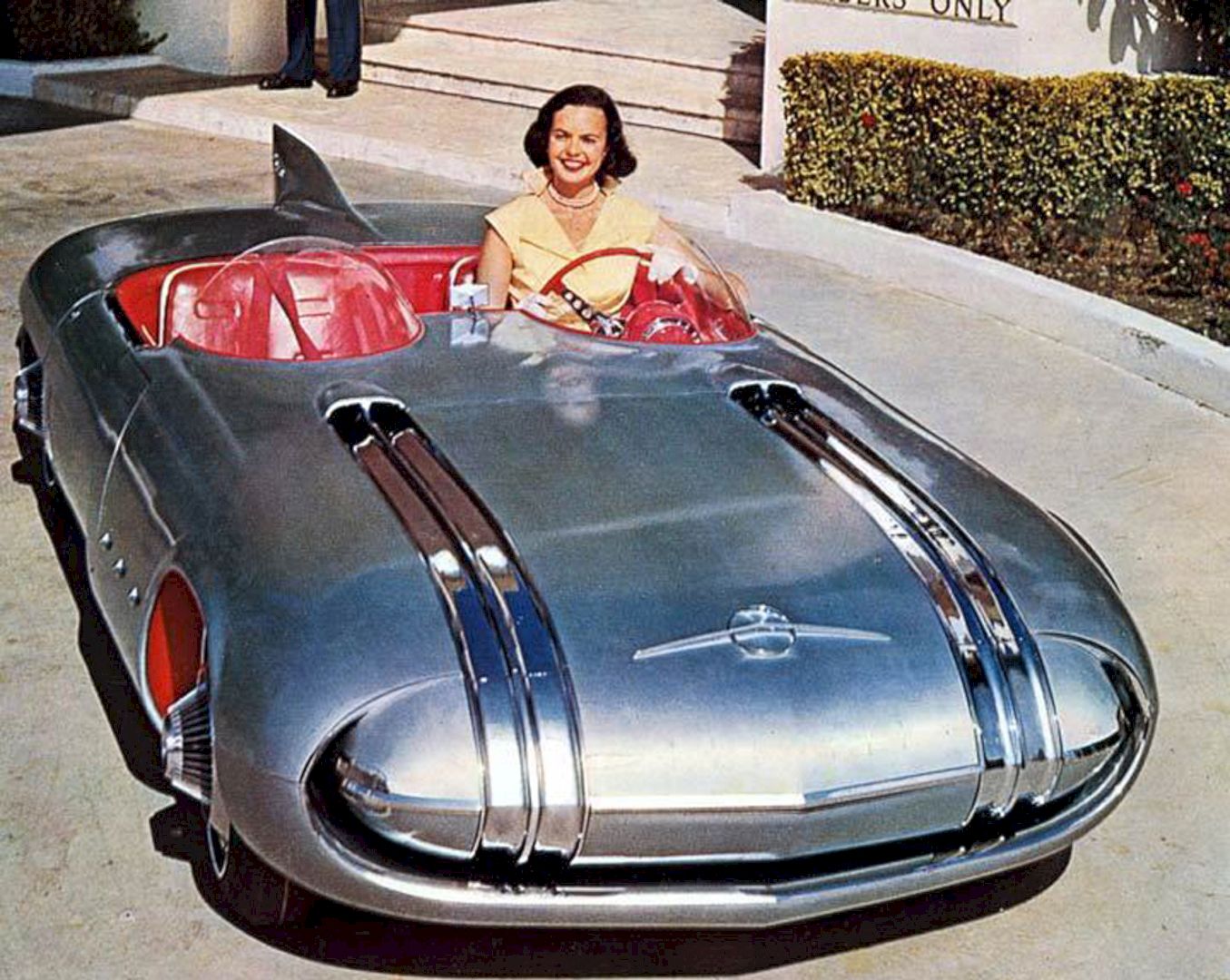
The reflective silver strips were the last iteration of a dying theme
This would be the swansong car for the silver streaks. Though a popular trim motif, it was vaguely Art Deco in styling and GM Design and Management were looking for more futuristic accents for upcoming Pontiacs.

This reproduction Club de Mer interior is faithful to the original design
The interior was Spartan in ornaments and controls, but rich in comfort, as vermillion red seats welcomed driver and passenger. A cluster of instruments were nestled into a conical tunnel below the windscreen.
A flat floor spanned the width of the cabin. Above this, in a flat bar, was the driveshaft. The engine was in the front of the car and a transaxle was placed in the rear, giving the car an almost 50/50 weight distribution.
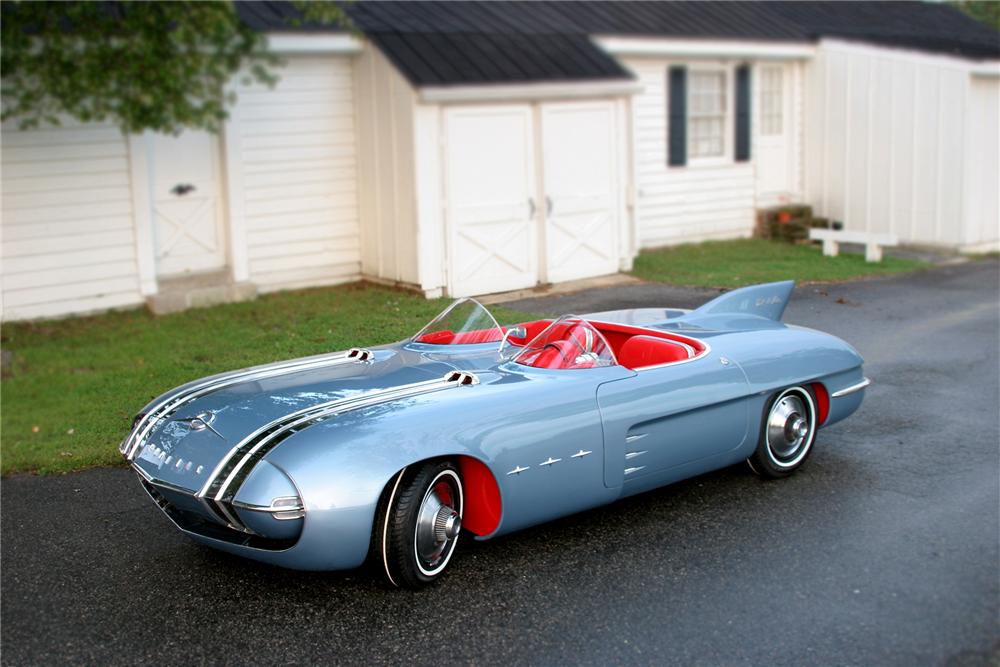
Hidden headlights and small dual screens added a motorsport vibe
The odd details give the car a lot of its character. The headlamps were located behind the sliver streaks at the front. The fender linings were painted red, previewing production cars a year or two ahead.
The windscreen was originally a single curved unit, like a Corvette, but dual canopy-type windscreens looked ‘racier’ and were popular on the Lincoln Futura concept of the previous year.

Rear view shows simple massing and details, but oh, that fin…
The single dorsal fin referred to both the maritime narrative of the car, and to dry lakes racing. It was definitely on-trend for the period, but it looks a bit silly now. Nevertheless, the fin’s shape reappeared on the 1957 Cadillac Eldorado, albeit in a pair.
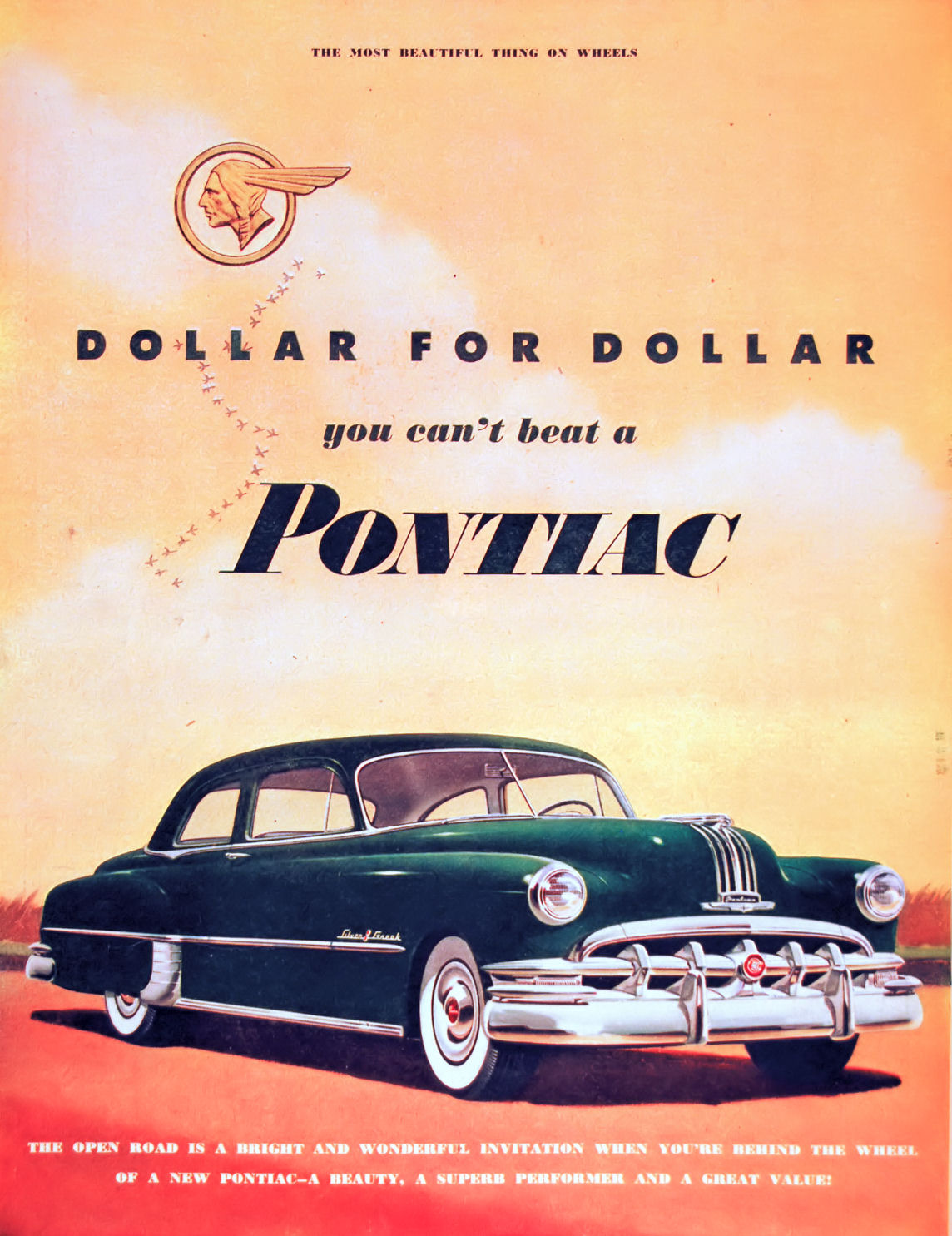
Pontiac’s reputation was for stodgy design and good value. This image began to improve in the 1950s
The Club de Mer was not just a ‘dream car’ for the Motorama show. It was, along with its older sibling the Bonneville Special, a signal from Pontiac that the image of the brand was changing. For decades, the Pontiac brand had stood for solid, if unexciting value – a sort of General Motors’ version of Studebaker – but that was all about to change.
Pontiac leadership, under Pete Estes and Bunkie Knudson, would be moving towards a performance brand; towards cars that had definite presence on the street. The “Wide Track” and GTO years were only half a decade away.
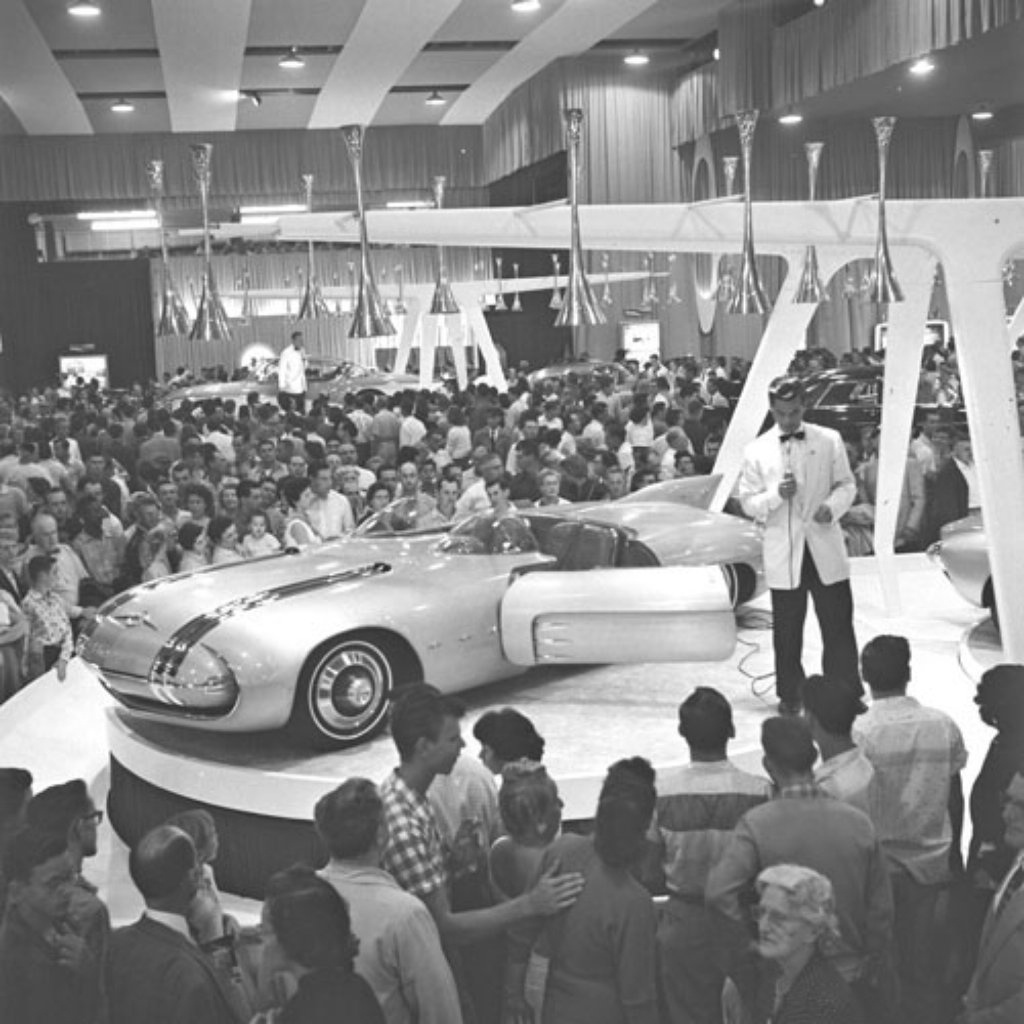
1956 Motorama – Alien eyes watch over the bold new concepts
The Club de Mer travelled with its siblings around the country throughout 1956, stopping at five cities and receiving some 2.2 million visitors, a record year for the Motorama shows. The car was then put into storage and ultimately met an untimely date with the crusher in 1958, sharing the fate of many concept cars of that era.

The reproduction Club de Mer’s… unpromising beginning
But the Club de Mer found a rebirth in a couple of ways. First, a replica of the car was built in 2000s. It was made of a fiberglass body on a 1959 Pontiac chassis and drivetrain, so there were changes necessary, but the form and proportions were faithful to the original car.
The interior was reasonably faithful too, although there was no attempt to reproduce the ‘floating’ driveshaft.
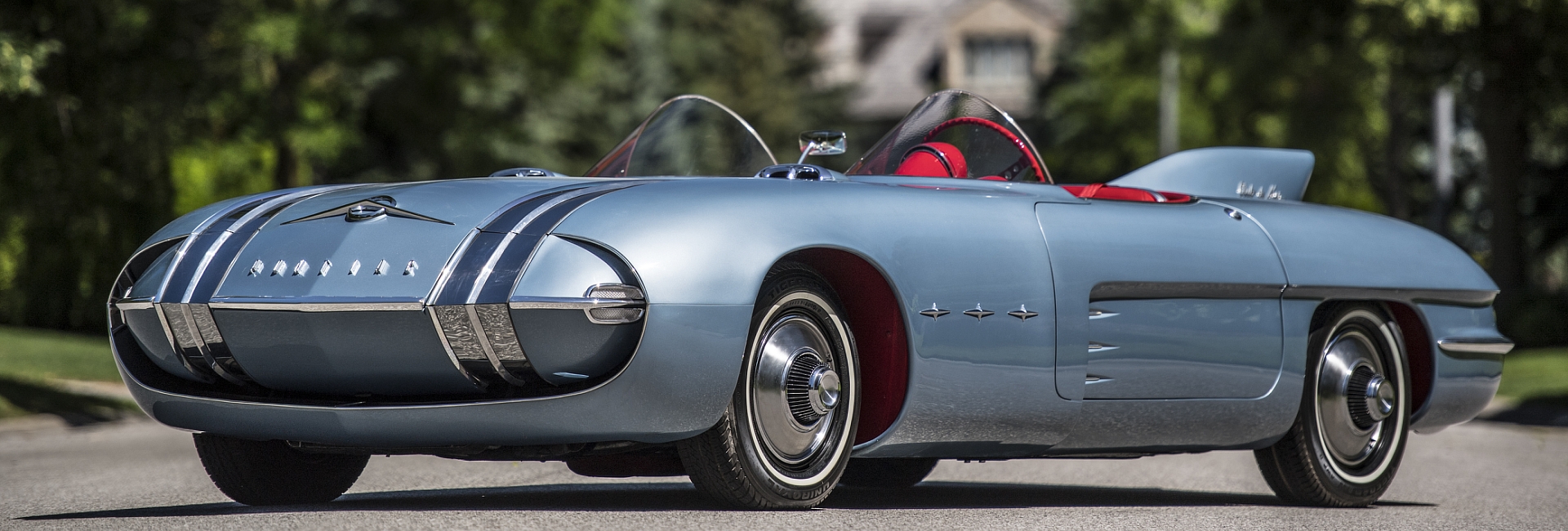
The replica Club de Mer was built of fiberglass on a 1959 Pontiac chassis
This reproduction went on the auction block at the Barret-Jackson auction in Arizona in 2009. It fetched $110,000 (~£85,000). The original ¼ scale model was sold for $75,000 (~£58,000).
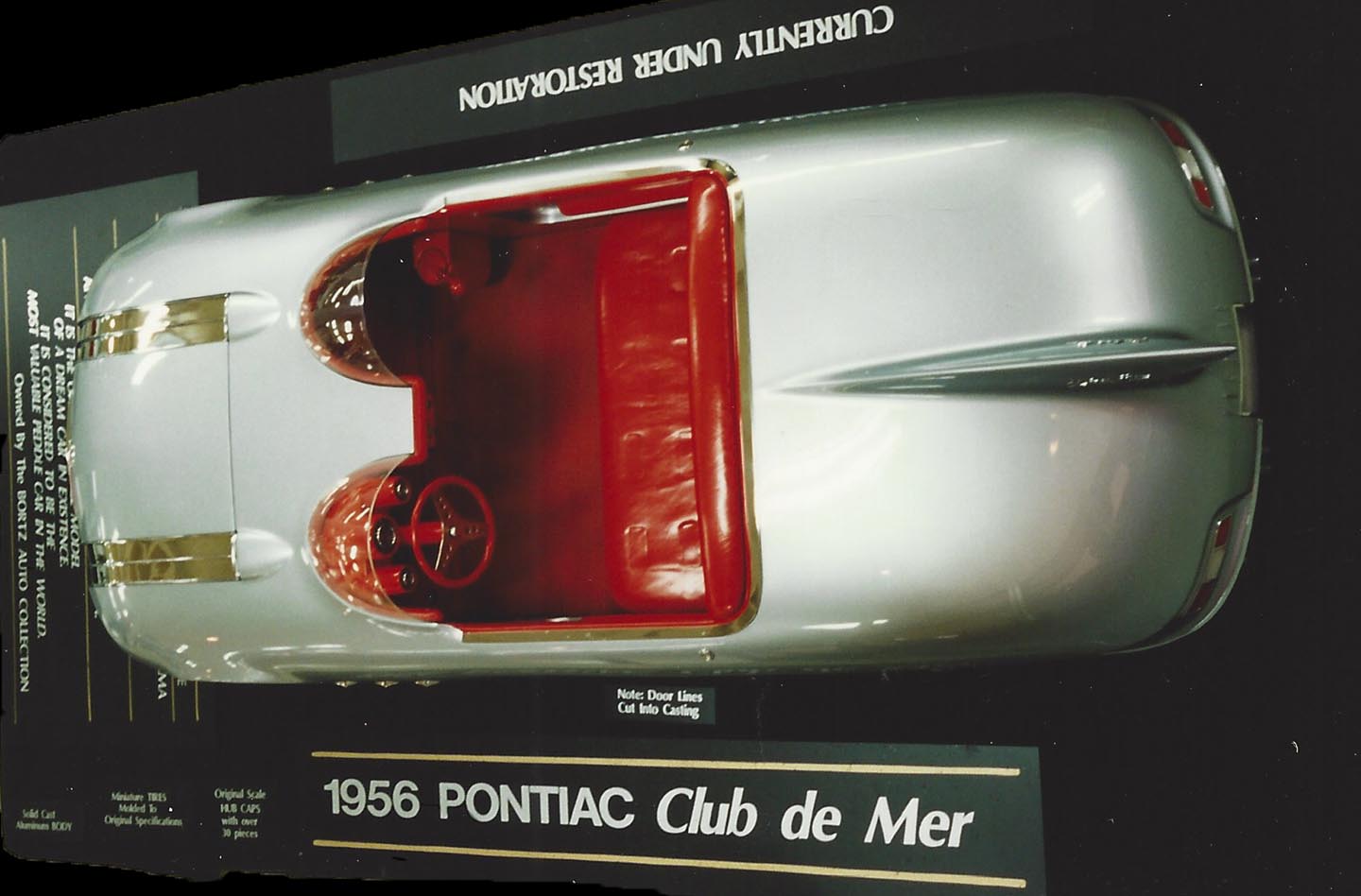
Even the original ¼ scale model fetched a premium price at auction
The rebirth of the Club de Mer may have had another, more roundabout incarnation. In 1956 Pontiac hired a brash young engineer, one with a reputation for flouting the rules, but also known for proposing and delivering bold powertrain solutions. That engineer was an expert in high-performance engines, perfect for the future of Pontiac.
He must have gazed lustfully at the Club de Mer, with its sleek form, silky metallic surfacing and high-powered engine, and thought with great excitement of the future that lay before him.
The name of that engineer?
John Z. DeLorean

DeLorean – the man and the car. Did it all begin with the Club de Mer?
If you would like to see more of the 1956 Motorama, check out this film, “Design for Dreaming” from General Motors. It’s a priceless artefact of High Camp. Nice kitchen, too:



